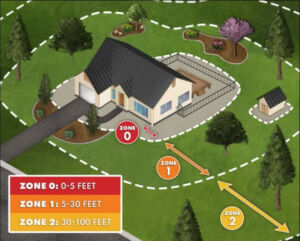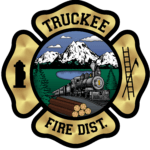Home Hardening in Truckee-Tahoe
Protect Your Property. Prepare for Wildfire.
Wildfire danger is a fact of life in the Truckee-Tahoe region. Home hardening—using fire-resistant building materials and creating defensible space—is one of the most effective ways to protect your property and your community.
What Is Home Hardening?
Home hardening is the process of strengthening your home and surrounding property to better withstand wildfires. This includes improvements to roofs, vents, windows, siding, decks, and landscaping. Following science-backed guidelines from the Insurance Institute for Business & Home Safety (IBHS), homeowners can significantly reduce risk by upgrading the most vulnerable parts of their homes.
Key Home Hardening Upgrades
Roofing
Replace wood-shake or combustible roofing with fire-rated Class A materials (metal, composition, tile). Clean gutters regularly to prevent ember ignition.
Vents & Eaves
Install ember- and flame-resistant vent covers. Enclose open eaves with soffits to block ember intrusion.
Siding & Windows
Use noncombustible or fire-resistant siding such as fiber cement or stucco. Install dual-pane or tempered glass windows for added protection.
Decks & Fencing
Build or retrofit decks with ignition-resistant materials. Use noncombustible fencing within 5 feet of your home.
Landscaping & Defensible Space
Create and maintain defensible space around your home by removing dead vegetation, spacing plants appropriately, and using hardscaping near structures.
-
This involves creating a buffer zone around the home, extending 100 feet or to the property line, with varying levels of vegetation management in different zones.
- Zone 0 (0-5 feet): Intense fuel reduction, removing combustible materials.
- Zone 1 (5-30 feet): Reducing vegetation density and removing dead leaves, needles, and debris, according to Cal Fire.
- Zone 2 (30-100 feet): Further vegetation management to slow fire spread.
- Zone 0 (0-5 feet): Intense fuel reduction, removing combustible materials.

New California Requirements
As of 2025, sellers in designated fire hazard zones must disclose:
- Whether the property complies with defensible space requirements
- Any known home hardening features or the absence thereof
- The estimated cost to retrofit the home for fire resilience
CATT encourages homeowners to stay ahead of these regulations and protect their investments today.
Local Rebates & Support
Truckee Fire Protection District’s Harden Your Home Program offers rebates for homeowners who complete qualifying home hardening and defensible space work. Learn more and apply at truckeefire.org.
Free Inspections are available through local fire agencies. Gain insights into specific vulnerabilities and how to address them.
Find a Local Contractor
CATT maintains a directory of skilled contractors in the Truckee-Tahoe region who specialize in home hardening improvements:
Browse Home Hardening Contractors!
All listed contractors are members of the Contractors Association of Truckee Tahoe (CATT) and understand the specific needs of our wildfire-prone region.
Home Hardening Self-Assessment Tools
- IBHS Wildfire Prepared Home Checklist
- CAL FIRE Home Hardening Recommendations
Take the first step in protecting your home by using these free tools to assess vulnerabilities and plan upgrades.
Contact Us
Need help getting started? Want to connect with the right contractor?
Contact: CATT


Don’t wait for the next fire season. Harden your home today.


